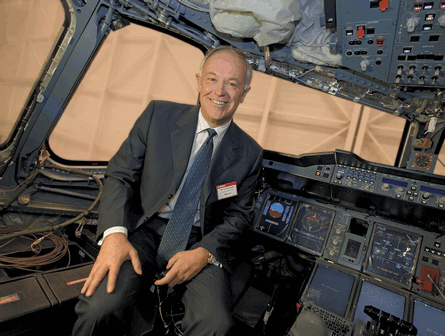Emirates Airline president Tim Clark describes the eight-year gestation of his Airbus A380s from contract signing to first delivery as a "labour of love", so it was no surprise that he was visibly thrilled - and no doubt relieved - to finally get his hands on the first of the 489-seat double-deckers in Hamburg at the end of last month.
The Briton was a founder member of the Emirates management team more than 20 years ago and, as any Airbus executive will confirm, has been in the driving seat throughout the A380's evolution. He may be one of the giant's biggest fans - Emirates has bought 58 and is pushing for a stretched 600-seater - but has also been one of the harshest critics when the production crisis pushed his deliveries back by almost two years.
 |
|---|
© Emirates |
Clark is held in high regard by both Airbus and Boeing as one of a handful of airline chief executives who can hold his own when engineering or sales teams get technical. And he has personally overseen the turning of his A380 innovation dreams into realities - not least the two unique on-board showers in first class.
"It's been an eight-year labour of love," says Clark. "We're very excited to get the aircraft. I think when passengers - premium or economy - get on board, they'll have a great experience."
Global Network
Few would disagree that Clark has been one of the architects of the global network carrier concept. Backed by Emirates chairman Sheikh Ahmed bin Saeed Al-Maktoum, the ex-Gulf Air veteran has engineered the carrier's expansion since its launch in 1985 to create an airline employing 27,000 people, operating more than 117 aircraft and carrying 21 million passengers to over 100 destinations.
As he pursued his vision, Clark has driven the airframers to squeeze as much performance out of their new designs to enable every major city to be within one stop of every other through a transit stop in Dubai.
And as the airframers complied with his wishes, the business has come rolling in - Emirates' backlog stands at over 179 Airbus and Boeing aircraft - excluding the "top-up" deal announced at the A380 delivery ceremony for 30 more A330s and 30 A350s.
A decade ago, when Emirates' traffic surpassed that of Clark's old firm Gulf Air, the airline appeared alone in its quest to build a global Gulf hub. But the picture is different now, with local rivals Qatar Airways and Etihad Airways using the range performance today's aircraft offer to plan similar networks to Emirates in nearby Doha and Abu Dhabi. But Clark is unconcerned: "I don't have any issues with what could be regarded by the outside world [beyond the Gulf] as 'competitive forces' being set up," he says.
Some observers particularly question the threat that Etihad could be to Emirates' expansion plans. Its home base is less than 100km (60 miles) from Emirates', and the airline signalled its intent to become a serious player with its recent orders at Farnborough for 100 aircraft, including 10 A380s. But Clark sees the local rival as a help rather than a hindrance: "Etihad is a relief valve for us, and us for them," he says.
 |
|---|
© Emirates |
Next year Emirates will face some home-grown competition at Dubai's new international airport at Jebel Ali when the city-state's government-backed low-cost carrier - FlyDubai - launches operations. "There's plenty of scope for the enlargement of existing services from Dubai that I don't think Emirates or Etihad would have serviced," Clark says.
The new deal for A330-300s - due to arrive from 2012 - comes as part of a plan to smooth out the "bumps" in the airline's hub operations. "These aircraft are part of our 'depeaking' plan to put aircraft on the ground in Dubai outside our main 'banks' of arrivals and departures," Clark says.
While Emirates and its Gulf rivals have often seemed "bulletproof" to the world's economic cycles, Clark is quick to acknowledge that the airline is not immune to the escalating cost of fuel. Steps are being taken to address this with the capacity across the network being tweaked and recruitment being slowed as part of a broader effort to reduce costs.
Clark says that the carrier had "sufficient pilots until next year" and that while regulatory requirements provide little room for adjusting staffing levels of operating crew, "all [other] recruitment is under the microscope".
The fuel price has pushed the airline away from the cost curve it had been tracking and the effort is under way to redress that, says Clark. He said in April that Emirates would have to look again at cost-savings targets, and raise them from the $100 million figure it set out last year. "The target is now more like $500 million," he says.
With the paint hardly dry on the first A380, Clark is already engrossed in his next fleet moves. He is waiting to see how good the A350-1000 turns out to be - and whether to increase his order beyond the 20 aircraft to which he is already committed - while keeping a weather eye on Boeing's 777 developments. "I think they will lean towards ER improvements [rather than all-new]," he says.
Meanwhile, discussions continue with Boeing about the 747-8I as he pushes the US airframer to find - guess what - more payload/range.
Source: Flight International























